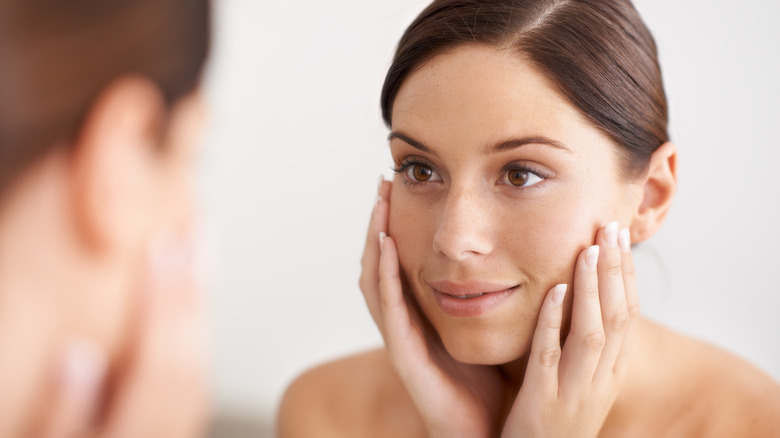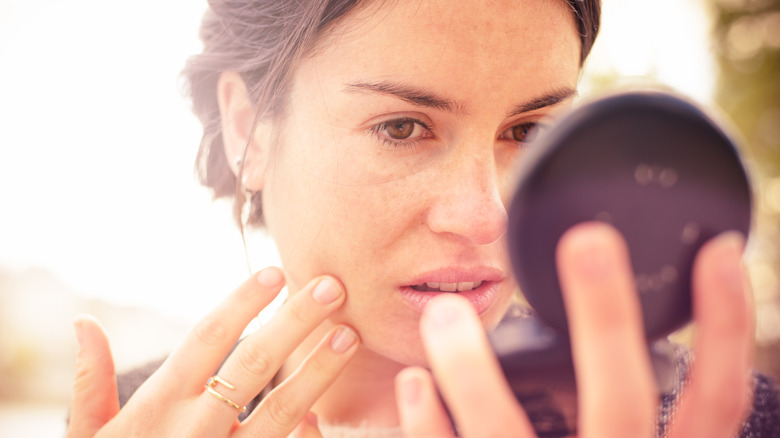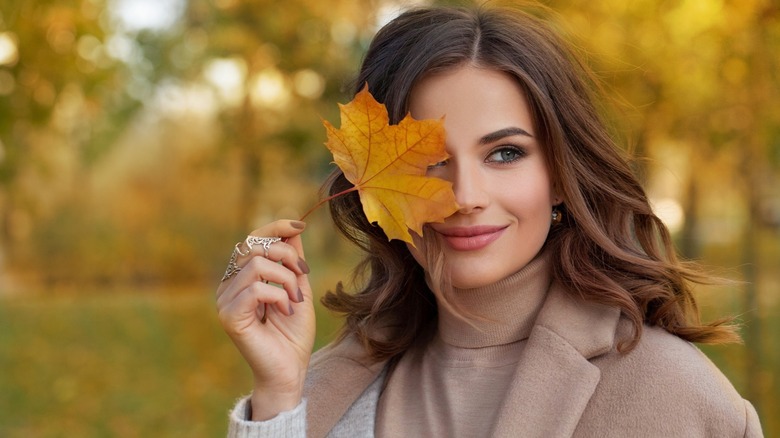Does Your Skin's Warm Undertone Have A Fall Or Spring Tone? Here's How To Tell
When looking for a foundation to match your skin tone, you've probably seen the words "cool," "neutral," or "warm" posted on the various bottles. If you're like most people, you've tried and tested many shades to see what looks and blends best with your natural skin. If you've found your perfect foundation shade that way, then you've probably unknowingly discovered your skin tone.
Discovering your natural skin tone can be beneficial, not just for finding foundations and concealers, but also for finding clothing and colorful eye shadows that look good on you. Colors are powerful: Wearing the right colors can immediately make your skin go from dull to glowing by bringing out your natural undertones.
If you know you have warm skin, but you can't seem to make it pop as it should, you may be using the wrong season's colors. Warm skin comes in both spring and fall tones, just as cool skin does with winter and summer tones. Finding out which one you are isn't hard to figure out, and it can make all the difference in your appearance.
Discovering your warm skin tone
Although you may think all warm-toned skin is the same, the truth is there is a distinct difference between a warm spring tone and a warm fall tone. And, the easiest way to figure out your skin's undertone is to simply look in the mirror.
You may think warm spring skin equals tan skin, but that's not necessarily the case. Warm spring skin is made up of clear, bright, and soft undertones such as gold, honey, cream, and peach. This oftentimes results in a rosy cheek appearance and freckles. This skin tone is usually paired with lighter hair colors such as strawberry blonde, or other blondes, but light brunettes and copper reds can also be warm springs. Light-colored eyes such as green, light hazel, or blue are common warm spring colors.
On the other hand, a warm fall skin tone is more subtle, with slightly gray tones mixed into the rich warm tones. Someone with warm fall skin, like warm spring skin, can have most hair colors, such as blondes, reds, and brunettes of different shades. Their eyes, however, tend to be darker in comparison and not as bright and vibrant. — colors such as dark brown, olive green, and hazel are common.
Styling your skin
Even though warm spring skin and warm fall skin are similar in some ways, including how a day in the sun affects them (i.e., the skin tans rather than burns), the differences will help you to find the best clothing for your skin tone.
When you think of spring, the image of sunshine and flowers may appear, and that's exactly what you should think of when trying to style your warm spring skin. Yellow-based colors, such as tropical reds, corals, blue-greens, peachy pinks, oranges, tans, and warm golden browns are all ideal colors for both makeup and clothing for warm spring-toned people. Icy cold colors such as blues and grays can wash you out if you're a warm spring, making you look pale.
Fall is associated with golden leaves, browns, oranges, and earthy colors. The warm-colored aspects of fall are exactly what you want to wear to complement warm fall skin. Darker and more subtle than bright warm spring tones, warm fall tones include olive greens, mustard yellows, and deep reds. Bright intense colors that work for warm springs will mask your rich warm skin, as will pastels.


